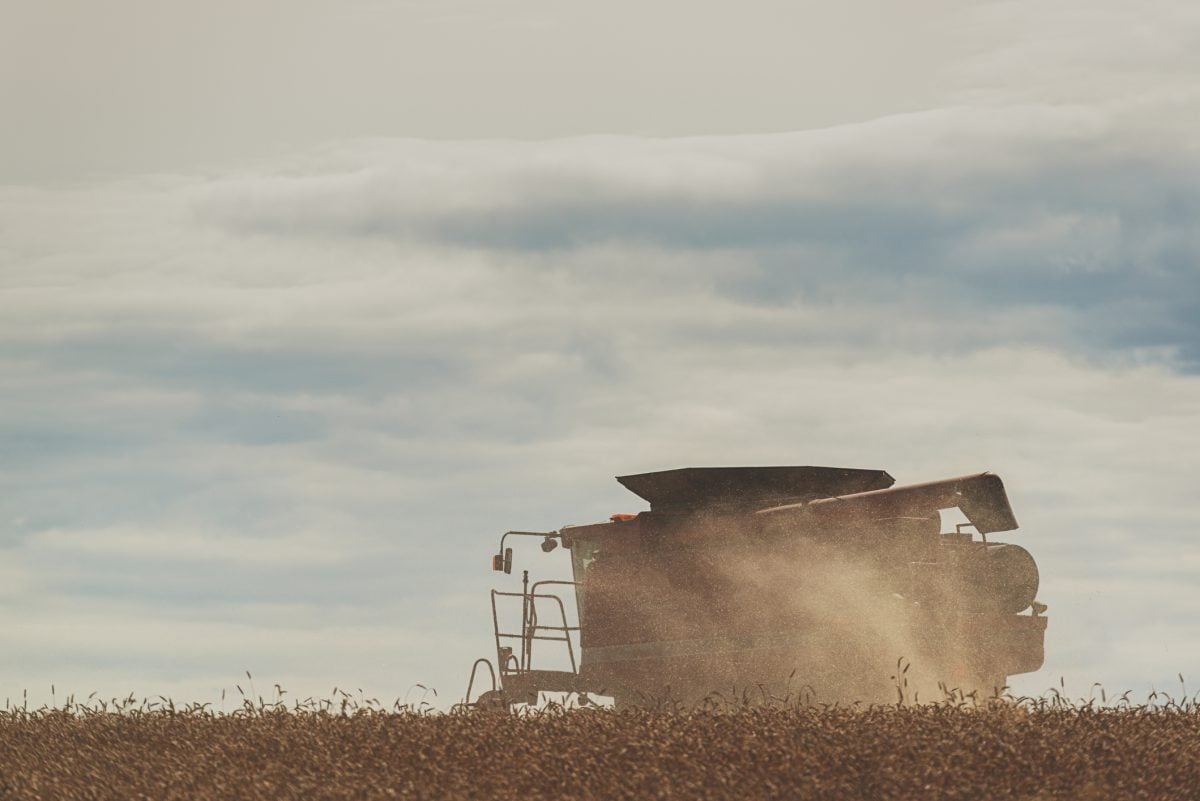Draining soil with tile isn’t complicated. In fact, it’s comparable to the scientific principles behind a cleaning sponge, says Hans Kandel, an extension agronomist with North Dakota State University.
During his presentation at the CropConnect conference held in Winnipeg Feb. 18-19, Kandel dipped an orange sponge into a bucket and held it at waist height as water dripped back into the bucket.
“Most of you went to kindergarten, I hope?” Kandel said.
“If I lift it out of the water … some of the water drips out of the sponge…. There is a force pulling the water out. Gravity is pulling the water out.”
Read Also

Alberta Crop Report: Harvest reaches completion
Alberta’s harvest is virtually complete at 99.4 per cent finished, ahead of the five-year and 10-year averages at this time of the season.
Gravity also pulls water down through the soil. It collects in perforated pipe and then flows out of the field into an adjacent ditch or collection pond.
“Gravity pulls the water out and air comes in. From an agriculture perspective, we are now creating good conditions for root growth,” said Kandel.
Farmer interest in drainage tile has spiked in Manitoba over the last several years as wet springs and summers have flooded out fields and curbed crop yields in the province.
Most installations have been limited to high value potato land because the cost is $600 to $700 per acre. However, oilseed growers are also burying tile under their land.
Curious farmers often want to know about the yield boost from tile drainage, but Kandel said there other benefits as well, such as reduced nitrogen losses, yield stability, salinity control and field access.
Kandel’s research in North Dakota, which evaluated the same soybean varieties on drainage tile and without tile, suggests tiling enhances yield by nine percent, although yield increases can be significantly higher in wet years.
“Basically, what I’m telling you is if you have an excess rainfall event, tile will help you and will (improve) yield.”
Controlling soil moisture also reduces the nitrogen losses that occur when soil is saturated. Kandel has evaluated the performance of enhanced efficiency fertilizers that reduce the potential of nitrogen losses and found that managing the water table plays a crucial role in denitrification and leaching.
“The (tile) drainage preserved more of the nitrogen than the (products),” he said.
“Drainage is more important to protect your nitrogen.”
Dave Franzen, a NDSU extension soil fertility specialist, said nitrogen losses from saturated soils can be significant.
Clay soils in North Dakota were saturated for 30 days in the spring of 2010, and Franzen estimated the associated nitrogen losses at 80 pounds per acre.
“If you figure that’s about 40 percent of the available N, 200 lb. of N, 40 percent over 30 days, that’s about 1.3 percent per day,” he said.
Kandel has also studied the yield stability of tile-drained fields, which is yield variation from year to year.
He determined that tile drainage has the greatest influence on yield stability compared to other agronomic practices.
“Yields are more stable over time. They (farmers) tell me they can sleep at night because the risk is less with tile drainage.”
Tom Scherer, an NDSU agricultural engineer, said most drainage tile is being installed in eastern North Dakota but western farmers are also interested.
“I’ve been out in the southwestern portion of the state, which has an annual precipitation of about 14 inches (350 millimetres),” he said.
“Their low spots, that used to be their best producing, are starting to get salinized. So they’re interested in tile drainage more for salinity control.”
Scherer said farmers who installed drainage tile in the heavy clay soil of Manitoba’s Red River Valley would have to reduce the spacing between the perforated pipe, which increases the cost. However, North Dakota farmers are installing tile in fields with high clay content, he added.
“If you drive down to Fargo, you’ll find an awful lot of that land is (now) tiled,” he said.
“As far as I know it’s similar soil (to Manitoba). There’s a large proportion of what they call Fargo clay, 55 to 65 percent clay.”
Kandel agreed, noting it’s a matter of designing a system appropriate for the soil and field conditions.
“In the whole world, it (tile drainage) works.”
A grower from Winkler, Man. said he’s considering drainage tile but is worried about frost heave and its impact on the perforated pipe.
Scherer said 150 years of drainage tile use in the United States and excavations following installation to check for frost effects indicate that frozen soil doesn’t displace or shift the position of the underground pipe.
“That’s been a point of discussion,” he said.
“There is no evidence that it ever takes place.”
Drainage in the U.S.:
Drainage tile may be popular with farmers in eastern North Dakota, but it remains a contentious issue in the state’s prairie pothole region.
Farmers with dozens of small sloughs on their land may want to drain those wetlands to improve the productivity of their farm. One option is a strategic installation of tile to drain the depressions and consolidate the water in a larger pond.
Tom Scherer, an agricultural engineering professor with North Dakota State University, said the U.S. federal government strongly objects to such plans.
“In our prairie pothole region, the Fish and Wildlife Service, they have easements on there and they don’t want anything interfering with the waterfowl,” Scherer said at the CropConnect conference in Winnipeg Feb. 19.
“They’re not in favour of tile drainage anywhere near (wetlands).”
Scherer said the penalties can be severe for farmers who drain a pothole or consolidate water on their land.
“If you’re in the U.S. farm program (and) you drain a wetland, you can lose your benefits.”















